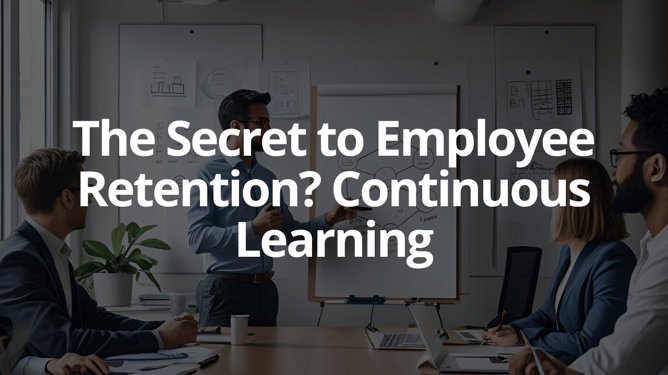What Is Psychological Safety And How Do You Create It?

As humans, it is incredibly fascinating as to how the body reacts to danger.
Largely, it is dictated by instincts and natural reactions that mostly arrive pre-loaded at birth.
A few things could happen.
You could fight or seek flight with the impending threats around you forcing you to become decisive in your thoughts and actions. Your heart rate suddenly rises, adrenaline speeds through every arterial avenue in your body, and certain senses heighten or lower as survival mode begins to override normal functionality within you.
There is every chance though that neither of these happen immediately, and that the lack of safety causes you to freeze in some type of fear-filled paralysis.
Fundamentally, we lack conscious control under these circumstances.
Which is one of many reasons as to why safety is acknowledged as a basic human need by Abraham Maslow’s ‘Hierarchy of Needs’.
We may associate much of those reactions with feelings of physical danger, but it is very much the same when it comes to psychological safety.
A lack of psychological safety in a workplace can lead to individuals making snap, stress-fuelled decisions (fight), leaving the team and seeking safety and satisfaction elsewhere (flight) or not being able to perform to their potential (freeze).
What is psychological safety though?
Simply put, it is the fear that participation could lead to punishment or belittlement.
As you can imagine, if you have not created a psychologically safe working environment, you may be witnessing many negative results of it.
These include poor levels of employee retention, poor employee engagement, a lack of creativity and new ideas, poor employee wellbeing, poor overall team performance.
And that is not an exhaustive list.
Hopefully at this point of the blog, I imagine you can see how crucial psychological safety is. Which then brings forward another burning question.
How can you create psychological safety?

Create Awareness of Actions and The Consequences
Every action has a reaction, and sometimes we can all be guilty of being unaware of the scale of that reaction.
If a huge source of the feelings of insecurity amongst your team is coming from the actions of others, a fantastic idea is to deliver developmental feedback to those individuals with the trusty BIO Model.
You can highlight the specific behaviour which is negatively impacting others, how it is impacting others, and then provide options for them to adjust this behaviour so that they can contribute towards building a safer and more positive atmosphere.
Seek to Understand and Engage With Everyone
If you are feeling unsafe psychologically, it can become easier to shut out everything around you in a bid to find safety.
As a leader, you can avoid this from happening by maintaining a strong link between yourself and the individuals in your team.
Actively listen, seek to understand, and engage with genuine interest and intrigue.
Connections are powerful. Not only do they feel immediately incredible when being formed, they are also a huge source of trust, self-esteem and confidence.
Develop Feedback Giving Abilities
If your workplace has a culture of finger pointing, minimal accountability and sparce levels of support, it is easy to see why people will feel unsafe to step forwards.
It would be like wearing Lady Gaga’s famous meat dress and skipping into the lion’s den.
Why would you bother when there is every possibility that you are going to be savagely torn down and ripped to shreds?
People flourish amongst positivity, so the atmosphere in your workplace needs to be one that builds waves they can ride, rather than riptides that submerge them.
Another real game changer could be to award your team with a feedback workshop. It will enable them to learn models such as BIO, and to begin being more constructive in their comments rather than destructive.
Prioritise Learning
If people fear the impact of their mistakes, then we need to spread the word even louder.
And that word is that… mistakes are actually incredibly valuable.
Of course, we may picture the ideal journey as one without bumps and hitches, however the growth on a journey like that is actually not that great.
When setbacks occur, that is where there is crucial learning to be had.
This is something that your team should feel, rather than that ‘failures’ are something to be ashamed of.
In a strange way, setbacks can become exciting because they are awarding you the opportunity to better yourself in that department and go again.
Encourage Idea Sharing and Collaboration
A lack of psychological safety leads to people feeling hesitant towards airing their voice, mainly because they are fearful of the reaction they will receive.
Of course, with implementation of the tips above, this is much less likely. However, if you are not regularly bringing the brains in your business together, wow are you missing out.
Collaboration builds greater team cohesion and chemistry, it is also an opportunity to bring a range of unique thoughts, perspectives, and skills to work together on solutions.
If people feel still feel anxious about sharing thoughts, feelings and ideas in person, then look to set up other methods for them to do so.
There are plenty of platforms that enable online sharing and collaboration so that everyone can be heard in whichever way gives them the confidence to share.
Thanks!
Alex & The Excel Team

P.S. If you would like to discuss any of your learning & development challenges for 2022, call us on +44(0) 1628488 854.
About Excel Communications
Excel Communications is a learning and development consultancy based near London in the U.K. For more than 30 years; we have been collaborating with clients across the globe. Partnering with Excel empowers you to evolve your people and business by fuelling a love for learning. We work with you to create unforgettably, customised learning experiences to achieve your vision of success and growth, with tangible results. View our case studies here. We have a team of expert trainers delivering programmes across five continents in multiple languages. Call us now on +44 (0) 1628 488 854.
Important
If you would like to watch our leadership masterclass recordings, you can access the latest leadership complimentary guide here.




